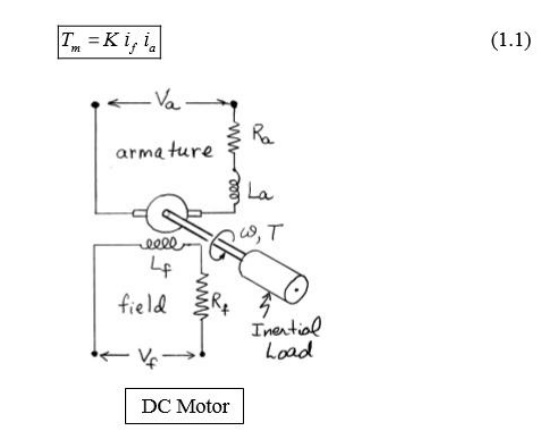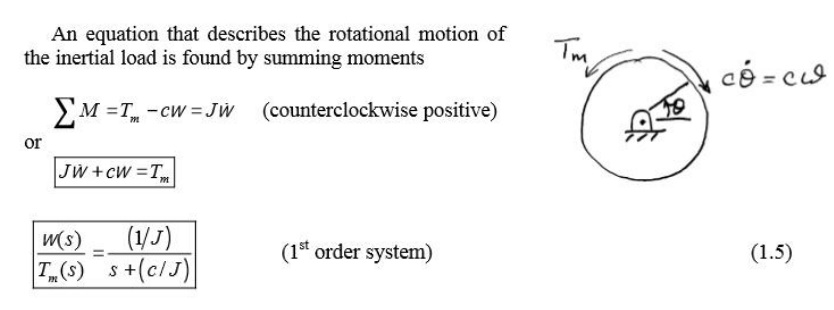The Figure at the represents a DC motor attached to an inertial load. The voltages applied to the field and armature sides of the motor are represented by Vf and Va. The resistances and inductances of the field and armature sides of the motor are represented by Rf, Lf, Ra and La. The torque generated by the motor is proportional to If and ia the currents in the field and armature sides of the motor.

Field-Current Controlled:
In a Field-current controlled motor, the armature current ia is held constant, and the Field current is controlled through the field voltage Vf. In this case, the motor torque increases linearly with the field current. We write

By taking Laplace transforms of both sides of this equation gives the transfer function from the input current to the resulting torque.

For the field side o the motor the voltage/current relationship is

The transfer unction from the voltage to the resulting current is found by taking Laplace transforms o both sides of this equation.

The transfer unction from the input voltage to the resulting motor torque is found by combining equations (1.2) and (1.3).


Combining equations (1.4) and (1.5) gives the transfer unction from the input field voltage to the resulting speed change.

Finally, since w=dq/dt, the transfer unction from input field voltage to the resulting rotational position change is


